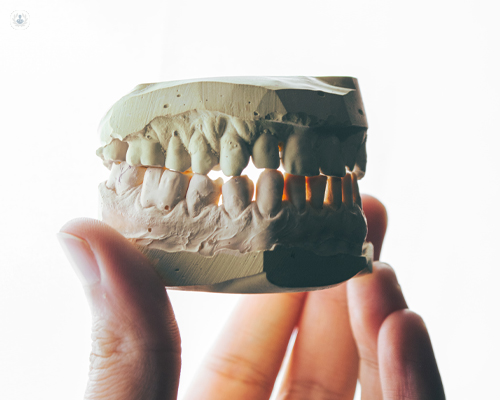All about the apicectomy procedure
Escrito por:If infection or cysts continue to be a problem in the root canal of a tooth, an apicectomy may be recommended. Professor Andrew Sidebottom, a highly-trained maxillofacial surgeon, provides information about what the procedure is, what is involved, and what to expect.

What is an apicectomy?
An apicectomy is when the end (or apex) of the root is removed from a tooth.
If a root canal treatment has not been successful and cannot be repeated, an apicectomy is typically recommended; occasionally, a hole appears in the root canal from treatment or infection returns. An apicectomy may also be recommended if there is sclerosis (obstruction) of a root canal or an infection in a tooth with a crown.
What are the benefits of an apicectomy?
The tooth should last longer and there should be less risk of symptoms returning. This procedure is successful in preserving your tooth for five years more in 90 percent of cases per root canal treated.
Are there any alternatives to an apicectomy?
The only two other options available are to have another root canal treatment or to completely remove the tooth.
What will happen if you don’t have an apicectomy?
The symptoms may get worse or come back. Infection may potentially spread and result in a cyst in the bone. If this happens, it will affect nearby teeth and it will be more difficult to treat the tooth. There may also be a risk of a serious and life-threatening infection.
What does the operation involve?
The procedure can sometimes be performed easily under local anaesthetic. Teeth further back in the mouth have more than one root canal and are more difficult to treat. These molar root canals usually lie near the nerve, which delivers sensation to the lower lip and sinus. The surgeon may offer a sedative or general anaesthesia if the procedure will be more difficult.
An apicectomy typically takes ten minutes up to an hour. This depends on the number of root canals that need to be filled and how easy or difficult they are to access.
A cut is made on the gum, and a drill may be needed to remove some of the bone that is around the end of the tooth, or any infected bone and tissue. The root canal will be cleaned and then filled.
Once finished, the cut on the gum will be closed with stitches, which may also be dissolvable. If they are not, you may be asked to return to have the stitches removed. It’s possible you will be asked to bite on a pack of gauze for about ten minutes to stop any bleeding.
What can help make the operation a success?
- Stop smoking. This will reduce risk of developing complications and improve long-term health. Keeping mouth clean and stopping to smoke greatly reduces risk of infection returning.
- Maintain a healthy weight. Overweight people are at higher risk of developing complications.
- Regular exercise helps prepare for the procedure, and can help recover as well as long-term health. Check with the healthcare team or doctor before returning to exercise.
What complications can happen?
General complications after the procedure include:
- pain related to difficulty of procedure
- bleeding
- swelling and bruising, more common with teeth further back
- infection, may need antibiotics
More specific complications include:
- Nearby teeth loosened or damaged, usually with lower-jaw incisor teeth where roots are close together.
- Receding gum as cut causes gum to shrink approximately one millimetre.
- Sinus problems—procedure in the upper molar or premolar tooth may result in opening between sinus and mouth. This should close on its own, but surgery may be needed.
- Damage to connecting nerves of lower lip if molar or premolar tooth in the lower jaw was operated on. May take up to 18 months to recover.
What can be expected in recovery?
Once the bleeding has stopped, you should be able to return home the same day. Someone should take you home and stay for at least 24 hours if you have had general anaesthetic or sedation.
If bleeding resumes at the site of the wound, press on the surgery site with a pack of gauze or a clean handkerchief in a knot for 20 minutes.
Do not smoke and keep the mouth as clean as possible. Antibiotics may be given.
The wound should be left alone for one to two days. For the following two days, start gently rinsing mouth with salt water four times a day. For at least a week after, rinse the mouth with chlorhexidine mouthwash twice a day until brushing is comfortable again.
Avoid drinking alcohol, exercise, or hot baths for one week to the reduce risk of bleeding, swelling, and bruising. Over-the-counter painkillers should help any discomfort.
After a week, you should be able to go back to normal activities. You may need an x-ray to check the healing of the tooth and surrounding bone.
If you've had a root canal treatment that has failed or you think you may need a consultation, go to Professor Andrew Sidebottom's profile and make an appointment.


